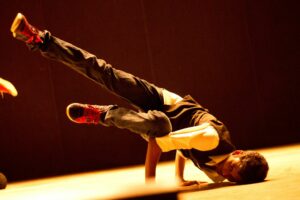These guidelines are appropriate for all styles of dance:
• Recreational Dancer: Beginning Level or Grade 1A, 1B, 2A, 2B and Intermediate level 3A and 3B classes may be taken once weekly for each style of dance. Intermediate and Advanced Level 4-6 may take two classes weekly in the same style of dance for a fun and recreational experience. Pointe is not a ballet option for the recreational advanced dancer for their own safety. Strength and repetition of training are a necessary requirement for pointe dance.
• Semi-Professional Dancer: Level or Grade 1A-1B suggested two classes per week at the same level; 2A, 2B take a minimum of two classes weekly three is recommended; Intermediate level 3A, 3B, and 4 take a minimum of three classes weekly. Advanced level ballet students may take ballet pointe class with a minimum of three classes weekly.
• Professional Division Dancer: Beginning Level or Grade 1A and 1B take class in the same style of dance twice weekly; Level 2A and 2B take the same style of dance three times weekly; Level 3A-3B take four classes weekly; Level 4-5 take five classes weekly in the same style of dance; Level 6 take six or more classes weekly in the same style of dance. If there are fewer classes offered in the style of dance, the dancer would take the maximum number of classes offered in that style and level, and take the level higher and lower than their designated level. Other styles of dance (i.e. for hip hop, the Professional Division can include jazz dance) are always encouraged, and ballet training is a necessity for every aspiring dancer.
Dancers may be moved up in level at any time through the month of December for our ballet performance placement, and through January for all other classes. Please consider your schedule if a change in level may be necessary in the fall or winter season and try to keep the next level up open in your schedule. The levels progress from A to B within each grade, and the grades include level 1 as the beginning level through level 6 at the professional level. Beyond the recreational level, progress is directly related to the number of hours per week a dancer trains.




